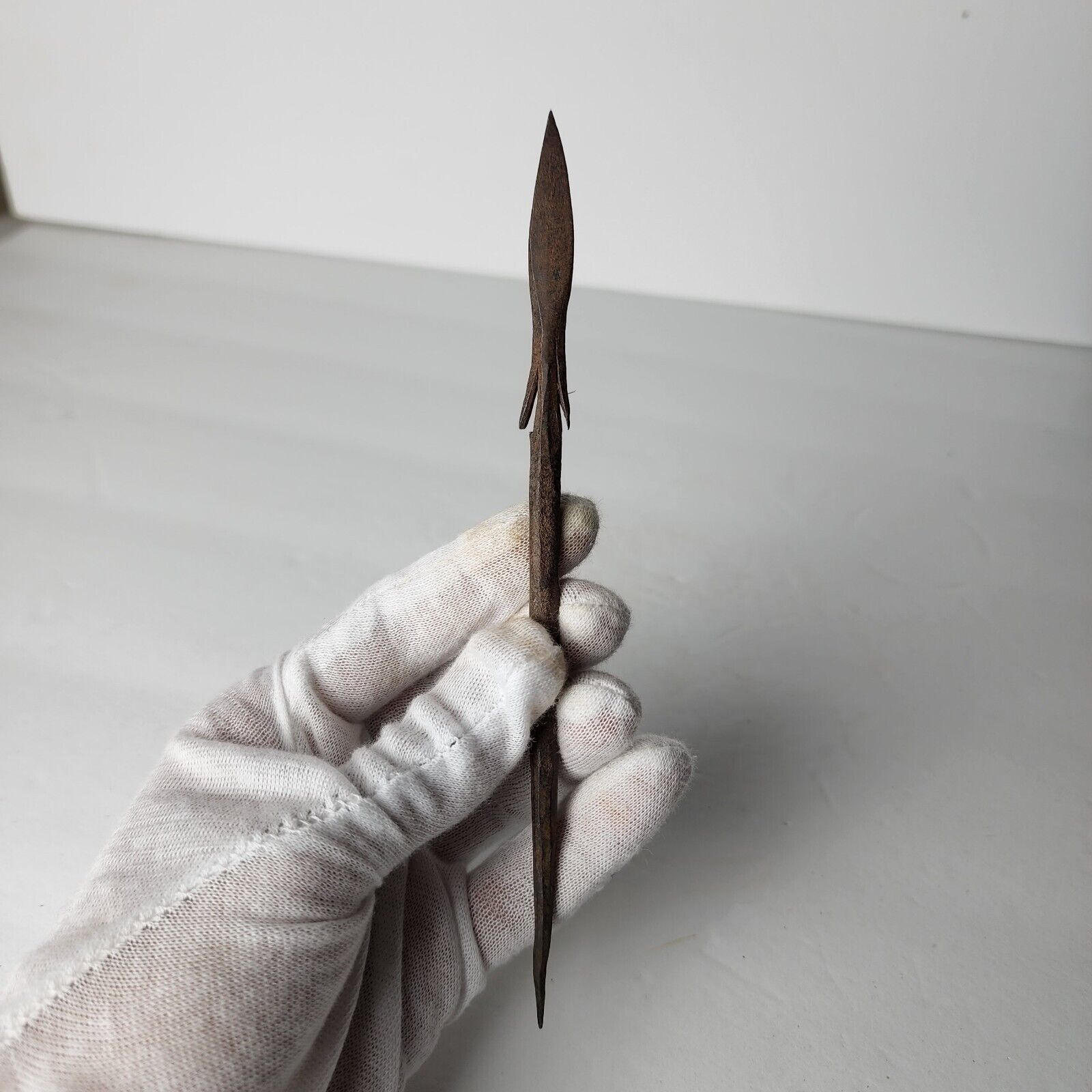-40%
Bakota Relic. African Art. Brass & Wood Female Sculpture.
$ 148.36
- Description
- Size Guide
Description
Bakota Reliquary Figure from Gabon or the Democratic Republic of CongoCarved out of a very hard wood sheathed in Brass.
20" long
There is some tape adhesive at the top. It can be removed with oil or WD-40.
The Kota revere the relics of ancestors. Ancestor worship formed the core of the family group's religious and social life. At the death of a chief, the initiates would take from the body of the deceased various relics, which were then decorated with metal and rubbed with powders of multiple magical powers.
The Kota have produced large quantity of statues of ancestors with the diamond-shaped lower part called mbulu-ngulu; these rather two-dimensional sculptures are in wood; symbolic metals were applied to the upper part in strips or sheets to add power. Copper in particular was identified with longevity and power. These statues stood guard in cylindrical bark boxes, on baskets or bundles called bwete that contained the skulls and bones of important ancestors. Bound into a packet and lashed to the base of a carved figure, the bones formed a stable base that allowed the image to stand more or less upright.
The reliquaries were kept outside the homes, in huts at the edge of the village. Only the initiates of the lineage had access to this sacred place. At the time of initiation in the reliquary cult, the clans would meet to perform communal rituals; each clan's chief would dance holding the reliquary. Some reliquaries featured a large figure representing the lineage founder along with some smaller figures representing his successors. There are figures with two identical or different faces made on two opposite sides of the flat head. The bwete was called on in time of crisis to combat unseen agents of harm. Its intercession was sought in such vital matters as fertility, success in hunting, and in commercial ventures. A husband could use it to guard against his wife's infidelity, for it was believed that if he placed pieces of her clothing in the reliquary, an unfaithful wife would be driven mad. Families took their bwete to ceremonies of neighboring villages to strengthen the allied community. The display of the bundles and their shiny, visually riveting figures was accompanied by feasting, dancing, and the making of protective medicines. These bwete were kept for generations, but during the 20th century, when religious beliefs changed, they were abandoned or even destroyed.












